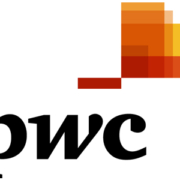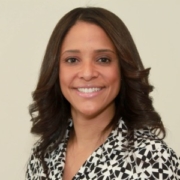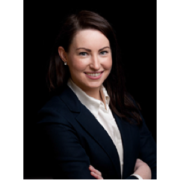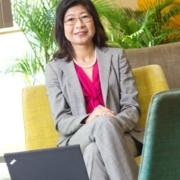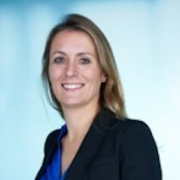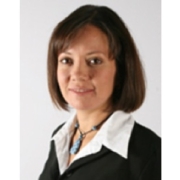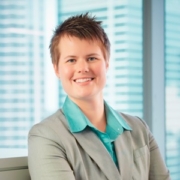Aspire to Lead: Developing Whole and Inclusive Leaders
 “It’s second to none in importance today in business, the skill of being a whole leader, an inclusive leader.” The Glass Hammer talked to Mike Fenlon, PwC’s Global Talent Leader, about PwC’s Aspire to Lead program.
“It’s second to none in importance today in business, the skill of being a whole leader, an inclusive leader.” The Glass Hammer talked to Mike Fenlon, PwC’s Global Talent Leader, about PwC’s Aspire to Lead program.
Now in its third year, Aspire to Lead is a PwC series on leadership and gender equality that provides university students and professionals with inspiration and practical insight on developing leadership, from the perspective of inspiring leaders.
“Aspire to Lead is all about development,” Fenlon told us. “We’re not talking about what you need to do to as the CEO. Here are the skills that Day One will be relevant and make a difference for you, women and men.”
In addition to an annual video webcast that reached over 107 countries this year, PwC runs development and skill-building workshops and discussions with students year-round and across the world.
The first live webcast featured LeanIn.Org Founder Sheryl Sandberg and President Rachel Thomas. The second focused on “The Confidence to Lead,” and featured Confidence Code authors Katty Kay and Claire Shipman and Eileen Naughton, Managing Director and VP of Google UK and Ireland.
This year, the event was hosted by the Academy of Motion Pictures Arts and Sciences, and featured Award-winning actor Geena Davis, Founder of Geena Davis Institute on Gender in Media, Dawn Hudson the Academy CEO, and Director Jennifer Yuh Nelson. The panel provided insights from Hollywood on gender portrayal and taking your career to centre stage.
Fulfilling potential – being an inclusive and awake leader
“Aspire to Lead is about fulfilling potential,” Fenlon told us. “It’s absolutely critical for us to create an environment where everyone, men and women, can fulfill their potential and be whole leaders, inclusive leaders, and that means both individually and in our teams. That’s literally at the heart of our development framework.”
“One (aspect of inclusive leadership) is that I’m demonstrating self-awareness,” explained Fenlon. “In the context of working across differences, that means a commitment to understanding my own (unconscious) blindspots.”
“I’ll give you a few words,” he said. “Engineer. Scientist. Venture capitalist. Executive. Surgeon. Leader. Accountant. CEO. Literally, who do you see? What the research shows us is that who you see is skewed towards a male image, for both men and women.”
“The point is when I see you, do I see you as someone who possesses the potential to be a leader,” said Fenlon. “Am I going to connect you with people who I think will be valuable? Am I going to assign you to work that will stretch you and develop you? Will I take some risks because I see potential? This is about seeing potential.”
One of the discussion materials that’s been used in the program is an animated video in which a woman shares an idea in a meeting and goes unnoticed. Minutes later, a man shares the same idea and it’s hailed as “a breakthrough”.
“That shows a blind spot as a leader,” Fenlon said. “Am I awake, am I tuned into the dynamics of my team, to creating an atmosphere where everyone can contribute their ideas and everyone’s heard?”
“So when we talk about whole leadership,” Fenlon explains, “we start by saying I have to develop my self-awareness around who I am, around how my life experiences and culture have shaped how I see the world, and how I see others, and my ability to recognize talent. Is there anything more important in business than the ability to recognize talent, to spot talent?”
“If you’re asleep, if you’re blind, you’re really captive to your own biases and cultural assumptions, which just aren’t true,” Fenlon said. “If I’m awake, I understand, I’m seeing what’s in front of me, the dynamics in my team, who is speaking, who is being heard, who is contributing. I’m awake to the potential of my colleagues, of the people in my team. I see it. I’m excited by it. I’m creating opportunities for people to fulfill their potential. I’m aware of my blindspots. This is important for women and men.”
Throwing out the script
Speaking about the 2016 webcast, Fenlon says, “Our focus was the representation of gender in the entertainment and the media, and how that shapes the assumptions we make and those blindspots. We used that as a metaphor for ‘how do I write my own script, how do I demonstrate the confidence to be center stage, how do I launch my career in a way that I’m positioned to fulfill my potential?’”
The forum demonstrated how women can reject cultural scripts to write their own.
“Think of it this way,” said Fenlon. “Stereotypes are scripts that other people have written for you…You show up, day one of the office. Well, here are the three standard scripts, if you will, and they reflect massive blindspots. They may reflect all sorts of assumptions that are widely inaccurate about who you are and what you can do. But they’re the traditional scripts.”
“Jennifer Yuh Nielson is one of the very few women directors in Hollywood,” said Fenlon. “When she leads, and this is part of the power of the discussion we had, she leads as an introvert. She’s very focused on listening. She’s not the stereotypical director… She didn’t take the scripts that may have been handed to her. It’s about authentic leadership, playing to your strengths, and different styles of leadership than maybe what are stereotypically associated with men. It’s not just about being more like stereotypical male masculine models. And what can men then learn, in turn?”
Bringing men and women together
As one of the ten founding IMPACT partners for HeforShe, an important aspect of Aspire to Lead is that it brings both men and women together to work on gender equality together.
“When we did our session with Sheryl Sandberg, I bought all sort of books and I was handing them out,” said Fenlon. “I was talking to women colleagues and they were organizing Lean In circles, reading books, going to lunch and going to talking about it, going to conferences. And meanwhile what were men doing? Very little, is the answer.”
“I wrote in one of my blogs, ‘Is gender equality women’s work?’ Obviously, that’s rhetorical,” said Fenlon. “If we’re going to achieve gender equality, inclusive leadership, we all have a role to play here, and for men to become inclusive leaders, to fulfill their potential as a manager, as someone who can spot talent, who can bring out the best in others, who can bring out the best in a team, it means I’ve got to exercise self-awareness. I’ve got to look and acknowledge my blind spots. I’ve got to diversify my personal network. I have to learn to make sure I’m calling out all voices. I have to bring equality home.”
“The question is: who do you see…?”
“Aspire to Lead reflects our commitment as a culture,” said Fenlon. “We want students to have a really valuable development experience and in the process develop whole leaders, develop the leadership skills of students, help them prepare to launch their career, and to drive gender equality.”
Getting personal, Fenlon shared, “I brought my daughter to Hollywood Boulevard, and I took a picture of one star. You know these stars that have yet to be named? The question is: who do you see in that star? When you think about talent, when you think about a software engineer, when you think about a doctor, surgeon, accountant, lawyer, executive, venture capitalist, who do you see?”
Across the bottom of the symposium page for the Geena Davis Institute on Gender in Media, are the words: If she can see it, she can be it.
What Fenlon is driving at here is a critical complementary point. If we can all learn to see the potential of it already in her (or stop being blind to it), we can help her to be it, too.

